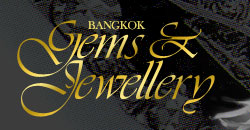
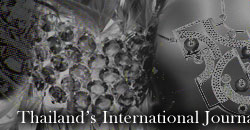
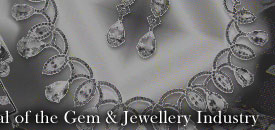
 |
 |
 |
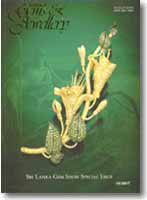 |
Old
issues |
Vol.
18 No. 5 -- August 2004 |
||
 |
||||
|
||||
It
is strang that a land that has consistenly supplied some of the most
beautiful gems to the world since antiquty remains largely unknow n
to the international gem and jewellery industry in modern times.Certainly
famous travellers of yore like Marco Polo and Ibn Batuta , as well as
the seventeeth cencury gemstone merchant Tavenier,have all praised the
havenly gems of the island of Serendip as Sri Lanka was known as earlier.
In fact, till as late as 1972 ,its officail name was Ceylon until it
reverted to its historical appelation of Sri Lanka sapphire are still
know as Ceylon sapphire in much the same way as rubies from Mynmar are
referred to as Burmese rubies.The identity fostered on th these nation
during the colonail era has stuck. Certainly,every gemstone dealer in
the world knows that Ceylon sapphire are among the world 's finest
gems.How many are aware though , that the range of sapphire include
not just the many color of corandum but also the star sapphire and the
star rubies as well. The volume of corandum rough tyhat has been yield
by the island since ancient time is truly extraordinary.It almost seem
as if the deposit are are inexhuastible.Sri Lanka's mineral rich land
yields more gemstones per square kilometre than anywhere else in the
world. The teardrop shaped island is second only to Brazil in the number of gemstone varieties found there.Apart from every colour of sapphire and the star sapphire and star rubies. it is also the only source of gueda,a milky white opaque from the corandum that is heated by the Thais into the most beautiful and scintilating sapphires. in fact til The began to heat treat the gueda from an ugly greyish white to a magnificent blue,these stones were totally disregarded and often ended up lining the fish tannks in gemstone dealers homes and offices. Apart from the corundum family,SriLanka also has extensive deposits of the chrysoberyl family,namely cat's eye,alexandrite,alexandrite cat's eye and hrysoberyl.Blue,red and purple spinel;white topaz that yields a London Blue colour - |
||||
| 1.A variety of Ceylon sapphire
and zircon rough. 2.Columbo,the capital of Sri Lanka |
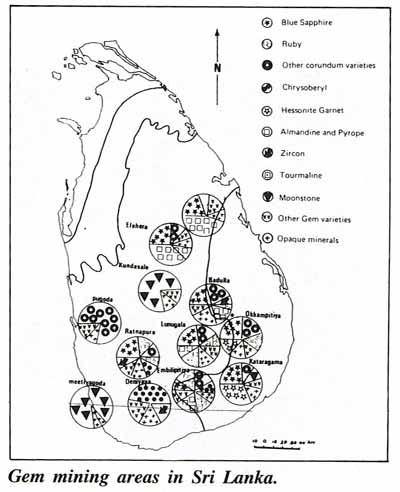 |
|||
after treatment;greeen,yellow,brown,
and colourless zircon; rhodolite,hessonite,pyrope and almadite garnets;
aquamarine and heliodor from the beryl family; smoky quartz, white quartz,
amethyst and quartz cat's eye; brown and yellow tourmaline ,and to lesser
extent green and blue tourmaline; and moonstone frome the feldspar group
are just some of the more common gems found there. The country also
has deposits of rare gemstone like andalusite, kornerupine, a variety
of agates,sinhalite,iolite ,indicolite ,fibrolite ,taafeite , ekakanite
, and star spinel. The main gem bearign area of the island are the central highlands.Within this geological complex,there are many active gem mining area but two are considered to be the most fruitful. These are the Elahera and the Ratnapura gem fields. The Elahera district is in the geographical centre of the country, about 115 kms northeast of the capital city Colombo. It is estimated that Elahera produces about 35% of the nation's gemstones and encompasses hundreds of square square kilometres of gem rich earth. The gem mines of Elahera are largely confined to the alluvial soils deposited by the rivers that drain the highland complex. The capital of Sri Lanka's gemstone industry however, is Ratnapura. Its name comes from a Sinhalese word that means City of Gems. This city of gems is located about a 100 kms southeast of Colombo in the central highlands. In fact, the earliest recorded gemstone mining activity goes back 2,500 years ago and yes, it was in Ratnapura. While Ratnapura is known for its beautiful blue sapphires, its real claim to fame is the magnificent padparadscha. The name padparadscha itself is a Sinhalese term meaning lotus coloured and this amazing stone boasts a delicate combination of orange and pink that echoes the first blush of the dawn sky and is said to be the colour of the finest lotus. With a government ban on mechanised mining, in order to prevent quick depletion of the gemstone deposits, miners draw on- |
|||
| the traditional mining practises
to extract the gems. In recent years, the government has allowed some
mechanised tools to be used but heavy machinery like bulldozers and excavators
remain on the forbidden list. In alluvial soils, the gems are usually
extracted by digging 10-20 feet deep tunnels into the soil and lining
the sides of the tunnel with water resistant timber in order to get to
the rough gem gravel. Gems are also taken from the river beds by dragging
them, dredging the bottom for the gemstones. A third method makes use
of the suction pump, in which mechanised pumps are used to pull up the
gem rich gravel from the river bed. This reliance on traditional rather than modern methods of mining ensures that the mines will not be depleted quickly and that the mining industry will continue to sustain future generations as well. Also, by banning the use of mechanised equipment, the government ensures that the mining activity does not do any ecological or environmental damage and the land retains its pristine nature for the benefit of posterity. Although the rough gemstone trade has been Sri Lanka's international calling card for many years now, there is much more to the nation's gem and jewellery industry than just that. Sri Lanka also has a very active gemstone processing industry. There are quite a few gemstone dealers who have also unlocked the mysteries of heat treating corundum. A vibrant lapidary sector processes all manner of gems in free and investment sizes as well as calibrated sizes. There are |
 |
| 3.There is a small but vibrant jewellery
market in Sri Lanka that caters to both locals and foreigners. 4.Most people associated this island nation with dapphire rough, but there is a variety of jewellery being manufactured here too. |
also lapidaries that specialise in niche in markets
supplying precision one of a kind cut stones. There is also
a small but growing sector that specialises in diamond cutting and
polishing. There are more than 30,000 trained, skilled people employed
in the gemstone cutting and polishing segment of the industryand for
a small country, that is quite a significant proportion. Sri Lanka also has a growing jewellery manufacturing industry that utilises the locally cut diamonds, precious and semi precious gems and sets them in fine gold and silver jewels. The jewellery sector typically produces medium range jewellery in gold and platinum set primarily with diamonds and sapphires. It also manufactures modern designs in silver as well as indigenous silver jewellery that draws on the ethnic elements and design traditions of the island. There is also a fast growing sector that produces fashion or costume jewellery as well. The country has its own assaying and hallmarking facilities as well. This lapidary and jewellery manufacturing activity has grown |
 |
| 5.The Sri Lanka Gem & Jewellery Association, with help from the govt., is a regular presence at key international trade shows. |
since the 1980's with the gradual
industrialisation of the country and the removal of trade barriers.
As the gem and jewellery industry is Sri Lanka's fifth largest export
earner after tea, agricultural products and other commodities, the
government has been passing progressive legislation to aid the growth
of the sector. This resulted in the establishment of a liberal export
import policy in 1998 and that in turn augmented the export earnings
from the sector. This liberalisation policy has included liberalising rough imports in order to build up the lapidary segment, lifting of import duty on tools, machinery and equipment for gem and jewellery manufacture, liberalisation of precious metal imports, and furthermore, complete income tax exemption on all export earnings for the gem and jewellery industry. The gem and jewellery industry is only one of five industries to be offered these generous measures by the Sri Lankan government, not only for its export dollar income but also because of its potential to employ large numbers of people. The government recognises that this industry has the potential for a high value added component that will eventually drive the export figures up even higher. However, the industry will have its work cut out for it with the presence of major players like India and China who will force it to grow even more competitive if it wants to survive. |
|
C
o p y r i g h t © 2 0 0 0 - 2 0 1 6 D4U
WEB TM A l l R
i g h t s R e s e r v e d |